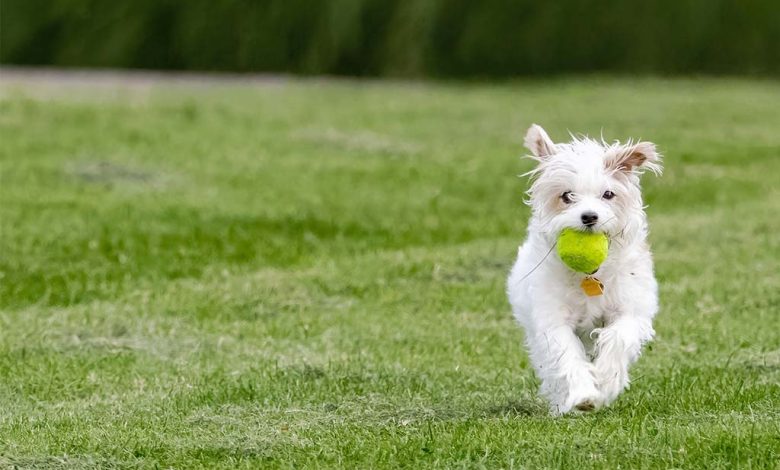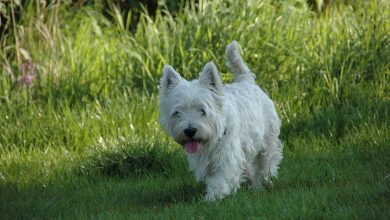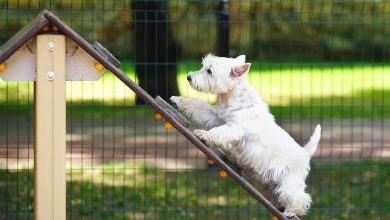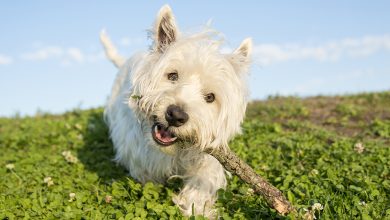Are Those Shoulders Taking Too Much Strain?
Biceps tendinitis is one of the most common causes of forelimb lameness.
One of the most common shoulder issues in canines is Biceps Tendinopathy/Tendinitis. Before we get onto the actual condition let’s take a look at the terminology used and where the Biceps muscle is.
- TENDINOPATY: degeneration of the tendon
- TENDINITIS: inflammation of the tendon
The Biceps Muscle originates from the supraglenoid tubercle on the top of the shoulder joint and runs down the humerus (upper arm bone) over the elbow to the radial tuberosity on the top part of the radius, and the ulna (the forearm bones). The muscle predominantly bends (flexes) the elbow.
Now we have the terminology and the basic anatomy out of the way we can look at how, why, and what can be done about Biceps Tendinitis. It is one of the most common causes of forelimb lameness.
The condition can occur in any dog and at any age, although, as it is classed as an overuse/repetitive injury we can predominantly break this down into groups:
- Middle to old, aged dogs: they’ve naturally been around longer so will have had more repetitions of movement than a younger dog.
- Dogs that perform repetitive motions: agility, flyball or racing dogs which incorporates speed and turning.
- Secondary to another issue: perhaps osteoarthritis or osteochondritis dissecans at the shoulder or biomechanical gait issues with another limb.

With any repetitive motion, the muscle will contract and relax in order to move the relevant joint. Over time the muscle gets tired and will lose the ability to relax properly, leaving behind small contractions in the muscle. As the muscle cannot relax to its normal length the tendon (which connects the muscle to the bone) is put under extra stress and tension. If the muscle doesn’t relax to its original state and the dog is then asked to go for a walk or to train the next day, the muscle will try to contract further without being able to relax fully.
This in turn places even more stress on the tendon and inflammation will occur through repetitive microtrauma and adhesions are likely to then occur. This process is repeated each day and therefore more inflammation occurs and before you know it you have a full-blown case of Biceps Tendinitis.
So, we have repetitive motion/activities that can cause Biceps Tendinitis, but it can also be caused due to another underlying issue. This is called a mechanical injury secondary to something else. The ‘something else’ can be an exhaustive list so I will try to keep it easy.
It basically means that if the dog is moving differently in its gait due to arthritis or due to another injury in either of the other three limbs it may overload the ‘good’ limb and cause inflammation or alternatively, if there is arthritis in the shoulder of the limb with Biceps Tendinitis, it’s likely to have been caused by the tendon rubbing over bony changes in the joint which will cause inflammation.
Alternatively, if the left shoulder is unstable then the left muscle will be working overtime to stabilise the joint, again causing inflammation as the muscle is trying to move the joint whilst stabilising, or the tendon is being overstretched which again will result in inflammation.
BOX:
Signs and Symptoms
- Lameness either continuous or intermittent, sometimes worse with exercise.
- Pain on shoulder flexion (taking the arm backwards) and elbow extension (straightening the elbow).
- Atrophy (wasting) of the Biceps muscle on the affected limb.
- Discomfort on palpation of the Biceps tendon as it crosses over the shoulder joint.
- History of chronic, progressive, or intermittent lameness
Treatment:
The aim of treatment is to reduce the inflammation around the tendon, so REST and possibly nonsteroidal anti-inflammatories (NSAIDs) is the common starting point. In chronic cases a corticosteroid (steroid) injection into the joint may be in order. You should maintain STRICT REST for 4-6 weeks.
Physical/manual therapy should help, practitioners specialising in canine osteopathy/physiotherapy/chiropractic will apply some gentle stretches, massage and review the whole dog and deal with underlying causes if there are any.
Surgery may be necessary should the above not work. Surgery involves cutting the tendon and reattaching it to the humerus. Normal muscle function is then restored.
Prognosis:
Medical or manual management is 50% successful, this is because prolonged inflammation of the tendon may cause arthritis in the joint. Therefore, early intervention is imperative to prevent any underlying pathology breaking out and keeping the tendon under stress and constant inflammation.
Surgical management is very successful and full recovery takes between 4-6 months.
Prevention is Better than A Cure:
You’ve probably heard this before, but prevention is better than a cure, not only with Biceps Tendinitis but with anything regarding the body whether that be canine or human. We go to the dentist every six months (or at least that is what is recommended) or we go to the gym to keep our heart and lungs healthy, a lot of my human and canine patients see me on a regular basis (usually 4-6 weeks depending on the individual) for a bit of a MOT, so why shouldn’t we try to prevent this in dogs that may be susceptible to it.
As Biceps Tendinitis is commonly caused by chronic overuse, then the best type of prevention is to prevent the excessive overstrain. Regular maintenance treatments for dogs are highly important to them, let’s face it, they go out for a walk or run with you every day……and very rarely walk in a straight line! Would you run a marathon a day and not have at least a massage every now and then? I know I wouldn’t. Dogs that participate in sport/s such as agility should be properly conditioned so that the tendon does not become inflamed. With the right exercises from an experienced practitioner any extra strain upon the tendon can be displaced and therefore the injury may be prevented.
Faye Andrews is a human and canine Osteopath and has her own clinic in Surry.






